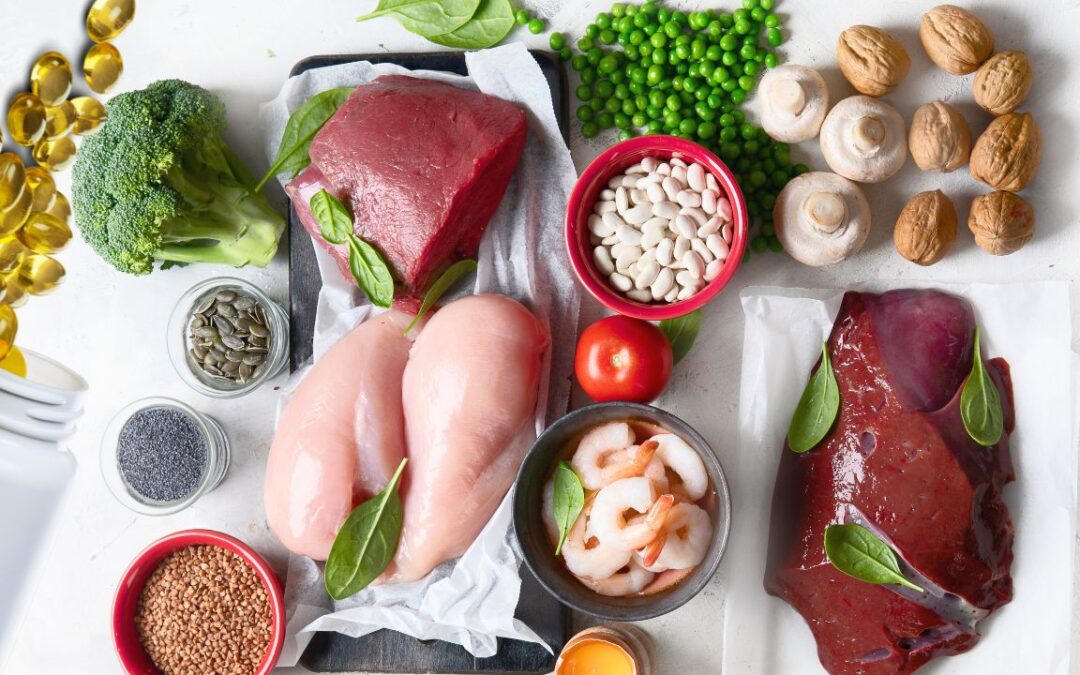Did you know it can take modern medical research 17 to 20 years before it reaches mainstream medical practice?
Sometimes it takes us time to be sure and this means repeating study results over and over again with various populations. Sometimes, however it can take time to instill new consciousness into our habits and routines. We humans are creatures of habit and prone to bias. It can he hard to change our minds and change our ways, which can lead to even the most well-meaning and intelligent doctors making outdated recommendations or relying on old science.
For instance, have you ever been told (or know someone who’s been told) to avoid eggs for your cholesterol (facepalm). What about low-fat diets? Ridiculous as it may seem, this is still being said to my patients.
You get my point, right?
This brings me to the topic of supplementation for two nutrients that we North Americans are prone to deficiency in: Vitamin D and Iron.
Let’s start with iron.
Iron:
Is needed to make hemoglobin in red blood cells. It shuttles oxygen around the body. We use that oxygen for cellular respiration (to make energy) in our mitochondria.
Low iron can lead to anemia (lack of red blood cells, hemoglobin and hematocrit).
Low iron can cause symptoms such as: low energy, low mood (dopamine), low thyroid function, feelings of cold, racing heart, anxiety, dizziness, weakness, hair loss, dry and pale skin, low stamina and exercise tolerance as the body is not able to move oxygen around the body to make energy.
So, what do you do when your iron is low? Supplement, right? Normally, I would have said yes.
That’s where things have changed for me.
So, I noticed that even if I recommended gentle iron supplements (iron bisglycinate or heme iron), patients wouldn’t take them. Even if they didn’t cause constipation (which the conventionally prescribed ferrous fumarate is infamous for) or other gastrointestinal symptoms, patients had a certain aversion to iron supplements that was hard to explain.
Further, sometimes they would raise blood iron levels and sometimes they wouldn’t. Sometimes they would raise levels and then levels would fall back down again.
It’s interesting to note that iron is the most abundant element on the planet, making up 35% of the Earth. It is fortified in commonly eating foods like bread and cereals. The problem is not iron intake, it is iron metabolism, or the way that iron is moved throughout the body.
We can have 10 times the amount of iron lodged in our tissues than is present and measured in our blood. And this isn’t good. Iron interacts with oxygen and causes oxidation (or “rusting”). This can cause inflammation of our tissues, like gut tissue. It can negatively impact our livers. We want iron safely stored in hemoglobin.
In order to get iron out of our tissues we need an enzyme call ceruloplasmin, which depends on the element copper. Copper is needed to get iron out of the tissues and into the blood in the form of hemoglobin so that it can be used to move oxygen to our mitochondria to give us energy.
Now, we also need preformed vitamin A (retinol, only found in animal foods) to load copper into ceruloplasmin.. (to get iron into hemoglobin so that oxygen can get to our cells, it’s like that song “The Farmer takes a wife”, haha). You get the picture.
Put simply:
Energy– > oxygen in mitochondria –> hemoglobin (with iron) –> requires ceruloplasmin (vitamin A and copper).
So, the key to supporting iron levels and energy production is not more iron! It’s the nutrients that help iron work properly in the body. Copper and Vitamin a, which are found (along with highly absorbable heme iron) in Beef Liver!
Interestingly enough Whipple, Minot and Murphy were awarded the Nobel prize in physiology and medicine in 1934 when they discovered that beef liver cured anemia and pernicious anemia (B12 deficiency).
Beef liver is rich in choline (supports the liver, especially fatty liver, cell membranes, brain health, digestion, gallbladder function, mood and memory), zinc, B vitamins and hyaluronic acid.
Very often we find that we are implementing too many interventions and the key is to go back to our roots: to nature and ancestral practices to solve our problems. Sometimes we don’t need more technology, but more nature. An ancestral food that few of us consume anymore (at least not regularly). Good old beef liver. I will tell patients to consume lightly cooked grass-fed liver or take it in a supplement form (which is what I do).
For more on this topic, check out my podcast episode on it!
This brings us to Vitamin D.
Vitamin D is actually a hormone. It regulates 900 genes in the body that are involved in bone health, immune function (supporting low immune function and autoimmunity) and mood.
We humans get vitamin D from the sun. Sun hits cholesterol in our skin and our skin makes vitamin D. This is the best way to get vitamin D. Therefore in sunny climates, get sun! Clothing and sunscreen blocks vitamin D, fyi. About 20 minutes a day of direct sun on 20% of your skin (t-shirt and shorts), can generally give you your daily vitamin D.
However, in the winter, our skin does not have access to sun exposure and we don’t make vitamin D. So what do we do? Well, up until recently I would have told you to take a vitamin D supplement, in the form of drops (as D is fat-soluble) to make sure that your blood levels of 25-hydroxyvitamin D (25-OH D) is >125 nmol/L.
However: vitamin D requires magnesium to be activated in the body (and most modern humans are notoriously deficient in magnesium). Sometimes low blood levels of D are actually an indication of low magnesium.
Further, high levels of supplemental vitamin D also deplete levels of vitamin A (or retinol). Vitamin A and vitamin D must be taken together as they are biological partners. In fact, one of the things that sunlight does is activate preformed vitamin A in the skin as well as activate vitamin D synthesis. Vitamin A helps activate Vitamin D receptors (and remember that vitamin A is responsible for iron metabolism as well).
The good news is that both vitamin D and vitamin A are found together in nature in Cod Liver oil (along with the antiinflammatory omega 3 fish oils EPA and DHA). So, I am more frequently recommending Cod liver oil as a vitamin D source along with magnesium to help support vitamin D metabolism in the body. We need to get vitamin D from a supplemental source in the winter if we’re not getting enough sun, however the precautionary principle will tell us that historic supplementation (what our Northern ancestors might have practiced) contains lots of wisdom.
Nutrients don’t work in isolation. They work in networks (just like our hormones and immune cells). We need copper and Vitamin A to regulate iron. We need magnesium and vitamin A to regulate vitamin D.
Isolating and supplementing with single vitamins and minerals may be indicated for some patients (going deep and narrow, particularly for people with pronounced and specific deficiencies), however in general I’m moving to a more holistic and ancestral prescribing practice with most patients when appropriate–this is where I see the current evidence pointing: to a more holistic vs. reductionist approach.
That being said, everyone is different and so all prescriptions are highly individualized. There are some people who these supplements are not indicated for or appropriate for and so alternatives are prescribed.
The reason my practice is built around 1:1 visits is because this is where the magic lies. In individualist prescribing. You are not the same as your neighbour. You have specific needs and considerations for your health.
I hope that makes sense. The world of nuritition is a fascinating subject. In order to stay on top of the current best practices it is my responsible to be on top of the research (sifting through the vast arrays of information) and flexible enough to pivot my approach when necessary.
I don’t practice the same way I did when I graduated. Or even the exact same way I did last year. It is important to keep things fresh and current and not let ego stand in the way of changing things for the better.
What do you think? Do you take beef liver and cod liver oil? How’s that been going for you?







